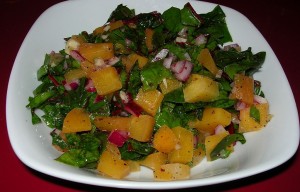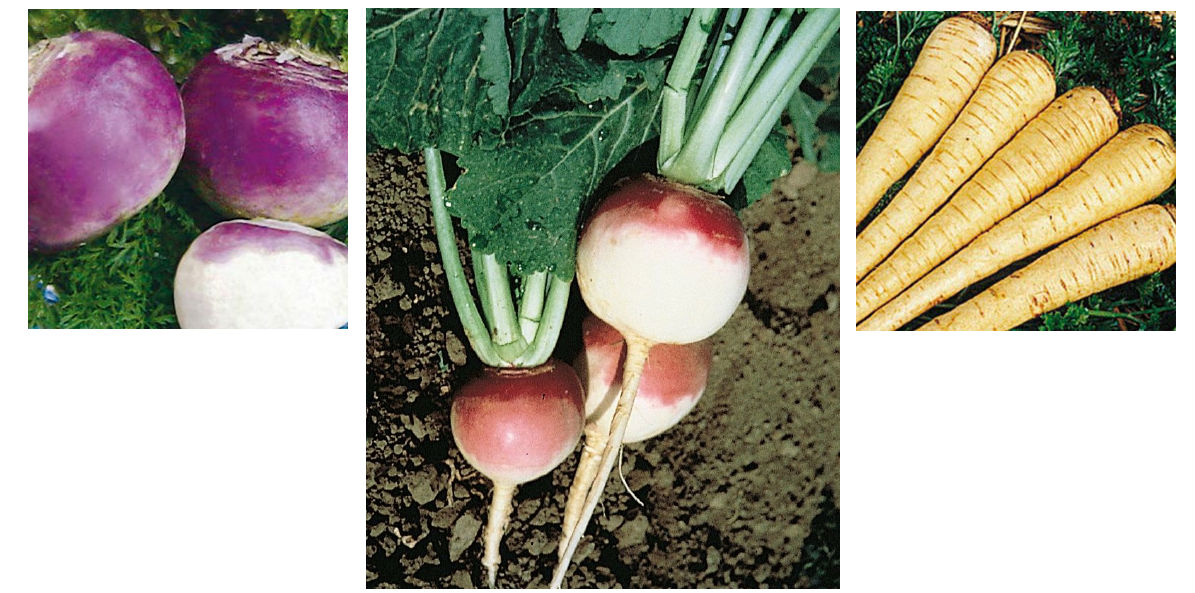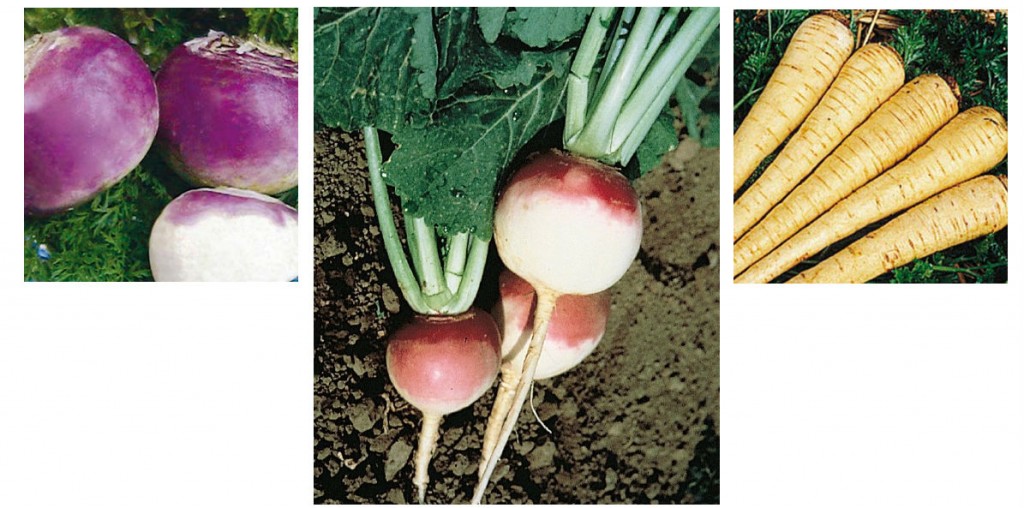In last post we talked about the nutritional value of three winter vegetables: rutabagas, turnips, and parsnips. All three can be harvested after frost, making your chilly frosty early-winter garden your own handy root-veggie fridge. We can all agree that these winter root crops pack a huge nutritional punch but even I’m a little leery of planting a whole crop because- what will I do with them? I have horrible memories of mashed turnips, boiled messy piles of NOT potatoes, of feeling tricked into eating what looks to be a delightful pile of salty, buttery mashed potatoes and then tasting turnips. No one likes to be tricked- especially our taste buds.
I think the key is to move away from the recipes that many of us make the ew face over (mashed turnips, mashed rutabagas) and instead focus on other ways to use these three winter root crops.
Soup it Up: The spicy taste and soft cooked texture of parsnips make them an ideal star of soups. From roasted parsnip soup (roast the parsnips ahead of time!) to interesting combos such as carrot and parsnip soup or apple and parsnip soup, there are loads of recipes available for curious cooks. Parsnips pair well with carrots- both visually and tastily. The two vegetables have a similar shape and similar textures, so cut them in coins and roast, or steam, and serve up a simple side dish. I personally have always added parsnips to beef stew, preferring their spicy taste over plain potatoes.

Get Roasting: Instead of boiling and mashing the gorgeous rutabaga roots, try roasting them. Rutabagas are naturally sweet and like other root vegetables (potatoes) they lend themselves well to roasting. Simply peel and cube your roots, toss with some olive oil, and lay out on a non-stick pan or use a non-stick mat on your pan, and roast at 400°F for 30 to 45 minutes, checking for doneness. The variations are where you can get creative. As the rutabagas roast, they get sweeter. Play on that sweetness by topping the coarsely grated sea salt. Sprinkle with fresh herbs, such as parsley or basil. Or really bring out the sweetness and top with chopped pecans and a sprinkle of sugar. Lots of folks love rutabaga fries, too!
In a Pickle: I’m not even going to pretend like I am a cooked turnip fan (if you are, you get a gold star sticker). I’ve had tiny white salad turnips before from a friend at a farmer’s market, and loved them raw. But big bulbous turnips? I’ve always turned up my nose. Until I visited a restaurant in Toledo, Ohio, and had my first pickled turnips. Pickled turnips are a key side item in Middle Easter cuisine and they are one of the most perfect foods you will ever eat in your entire life. Sliced white turnips are pickled in a brine of vinegar, salt, bay leaf, and beets (yep, beets)—then the magic happens, and you watch as, over the course of a week, your white turnips turn a bright neon pink. The result is a crisp, crunchy, snack that adds such a texture and flavor to wraps and sandwiches that you won’t be able to keep your hands off of it.
Before any of us get cooking—and hopefully many of us are ready and drooling—we’ve got to get planting. So, head over to Gurney’s and plan your root vegetable garden!


